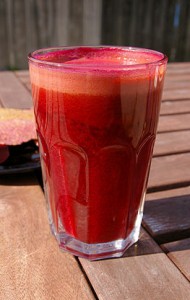Author Interviews, Rheumatology, Supplements / 29.09.2015
Creatine Supplement Increased Muscle Mass But Not Strength or Function in RA Patients
 MedicalResearch.com Interview with:
Prof. Andrew B Lemmey
School of Sport, Health and Exercise Sciences
Bangor University
Bangor, Gwynedd, Wales, UK
Medical Research: What is the background for this study?
Prof. Lemmey: Substantial loss of lean mass (LM; mostly skeletal muscle) is common in patients with rheumatoid arthritis (RA), as we and others have shown that even amongst patients with well-controlled disease approximately 67% are significantly muscle wasted. This loss of muscle, termed “rheumatoid cachexia”, is a major contributor to the decreased strength and impaired physical function which continues to characterise RA. Unfortunately, current drug treatments for RA, including use of biologics and the ‘treat-to-target (T2T)’ strategy, do not reverse this LM loss, nor fully restore physical function (Lemmey et al., “Tight control of disease activity fails to improve body composition or physical function in rheumatoid arthritis patients”. Submitted to Rheumatology (Oxford), currently under review). Whilst high-intensity exercise (specifically, progressive resistance training (PRT)) has been shown to be highly effective in restoring both lean mass and function in rheumatoid arthritis patients (Lemmey et al., Arthritis Care & Research 2009;61(12):1726-34), the lack of uptake and adherence to sufficiently intense training (Lemmey et al., Arthritis Care & Research 2012;64(1):71-5) means this form of therapy is not widely adopted. Anabolic nutritional supplementation offers a potential adjunct treatment intervention for increasing LM, and thereby improving physical function, that could be widely accepted. Indeed, our group (Marcora et al., Clinical Nutrition 2005;24(3):442-54) has previously demonstrated that 12 weeks of daily oral protein supplementation improved lean mass and some measures of strength and function in rheumatoid arthritis patients.
Creatine (Cr) is a popular dietary supplement generally shown to have greater benefits on both lean mass and physical function than generic protein supplementation. One study (Willer et al., Rheumatology 2000;39(3):293-8) has investigated the efficacy of Cr supplementation in rheumatoid arthritis patients. In this short uncontrolled trial, twelve patients underwent 3 weeks of supplementation, and although strength increased, no changes in function were found, and body composition changes were not investigated.
Using a double-blind, placebo controlled design, the current study aimed to investigate the effects of 12 weeks of oral Cr supplementation on body composition (by DXA; dual energy X-ray absorptiometry), strength (knee-extensor and handgrip) and objectively-assessed physical function (chair and walk tests) in patients with RA. Thirty-five patients (Cr=15, Pl=20) completed the study. (more…)
MedicalResearch.com Interview with:
Prof. Andrew B Lemmey
School of Sport, Health and Exercise Sciences
Bangor University
Bangor, Gwynedd, Wales, UK
Medical Research: What is the background for this study?
Prof. Lemmey: Substantial loss of lean mass (LM; mostly skeletal muscle) is common in patients with rheumatoid arthritis (RA), as we and others have shown that even amongst patients with well-controlled disease approximately 67% are significantly muscle wasted. This loss of muscle, termed “rheumatoid cachexia”, is a major contributor to the decreased strength and impaired physical function which continues to characterise RA. Unfortunately, current drug treatments for RA, including use of biologics and the ‘treat-to-target (T2T)’ strategy, do not reverse this LM loss, nor fully restore physical function (Lemmey et al., “Tight control of disease activity fails to improve body composition or physical function in rheumatoid arthritis patients”. Submitted to Rheumatology (Oxford), currently under review). Whilst high-intensity exercise (specifically, progressive resistance training (PRT)) has been shown to be highly effective in restoring both lean mass and function in rheumatoid arthritis patients (Lemmey et al., Arthritis Care & Research 2009;61(12):1726-34), the lack of uptake and adherence to sufficiently intense training (Lemmey et al., Arthritis Care & Research 2012;64(1):71-5) means this form of therapy is not widely adopted. Anabolic nutritional supplementation offers a potential adjunct treatment intervention for increasing LM, and thereby improving physical function, that could be widely accepted. Indeed, our group (Marcora et al., Clinical Nutrition 2005;24(3):442-54) has previously demonstrated that 12 weeks of daily oral protein supplementation improved lean mass and some measures of strength and function in rheumatoid arthritis patients.
Creatine (Cr) is a popular dietary supplement generally shown to have greater benefits on both lean mass and physical function than generic protein supplementation. One study (Willer et al., Rheumatology 2000;39(3):293-8) has investigated the efficacy of Cr supplementation in rheumatoid arthritis patients. In this short uncontrolled trial, twelve patients underwent 3 weeks of supplementation, and although strength increased, no changes in function were found, and body composition changes were not investigated.
Using a double-blind, placebo controlled design, the current study aimed to investigate the effects of 12 weeks of oral Cr supplementation on body composition (by DXA; dual energy X-ray absorptiometry), strength (knee-extensor and handgrip) and objectively-assessed physical function (chair and walk tests) in patients with RA. Thirty-five patients (Cr=15, Pl=20) completed the study. (more…)






















